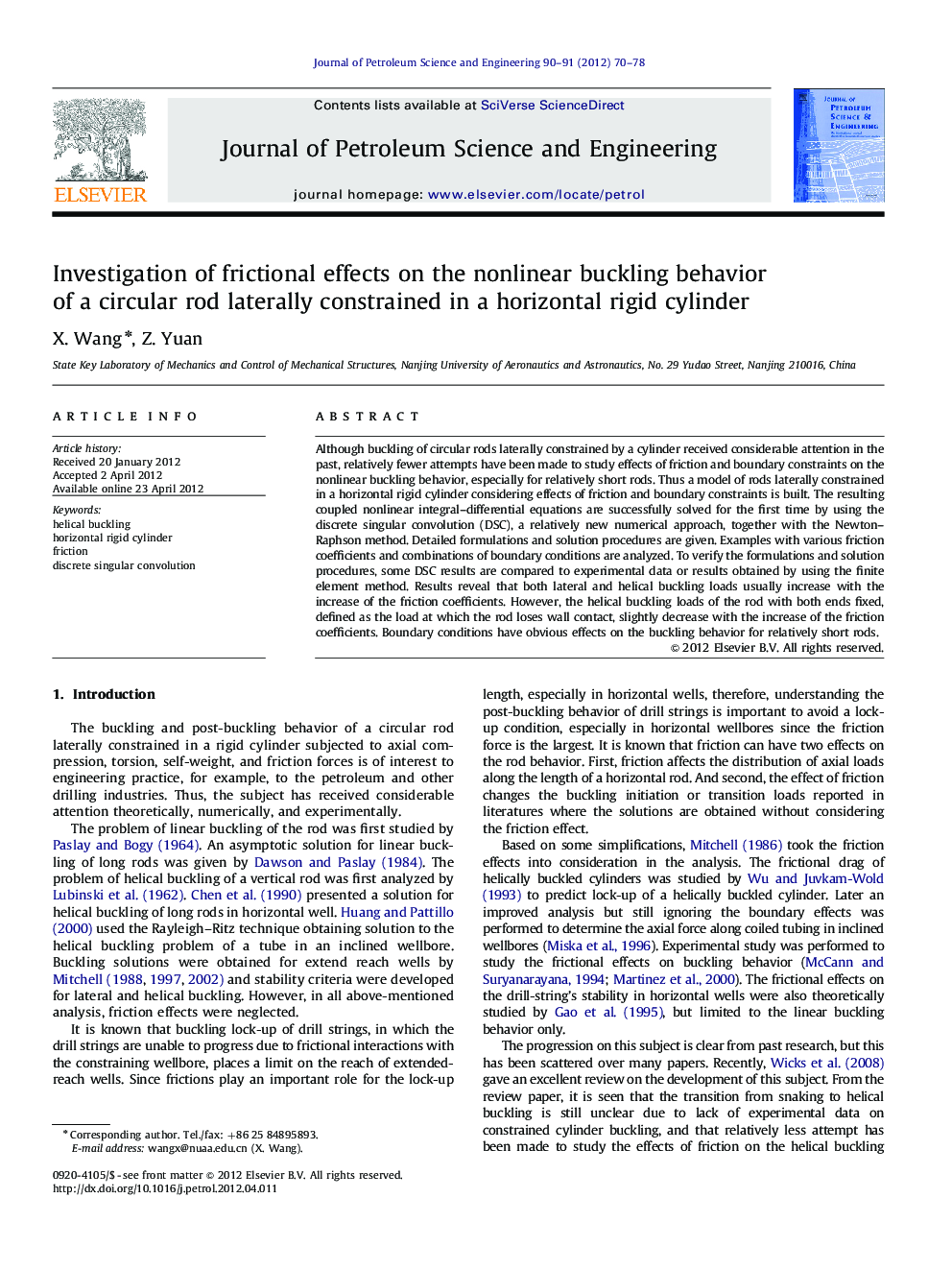| Article ID | Journal | Published Year | Pages | File Type |
|---|---|---|---|---|
| 1755437 | Journal of Petroleum Science and Engineering | 2012 | 9 Pages |
Although buckling of circular rods laterally constrained by a cylinder received considerable attention in the past, relatively fewer attempts have been made to study effects of friction and boundary constraints on the nonlinear buckling behavior, especially for relatively short rods. Thus a model of rods laterally constrained in a horizontal rigid cylinder considering effects of friction and boundary constraints is built. The resulting coupled nonlinear integral–differential equations are successfully solved for the first time by using the discrete singular convolution (DSC), a relatively new numerical approach, together with the Newton–Raphson method. Detailed formulations and solution procedures are given. Examples with various friction coefficients and combinations of boundary conditions are analyzed. To verify the formulations and solution procedures, some DSC results are compared to experimental data or results obtained by using the finite element method. Results reveal that both lateral and helical buckling loads usually increase with the increase of the friction coefficients. However, the helical buckling loads of the rod with both ends fixed, defined as the load at which the rod loses wall contact, slightly decrease with the increase of the friction coefficients. Boundary conditions have obvious effects on the buckling behavior for relatively short rods.
► The coupled nonlinear integral–differential equations (IDEs) are established. ► We propose a DSC-based iterative scheme to solve the coupled nonlinear IDEs. ► Friction effect on the buckling behavior of constrained rod in cylinder is shown. ► Boundary conditions have effect on buckling behavior of short rods.
